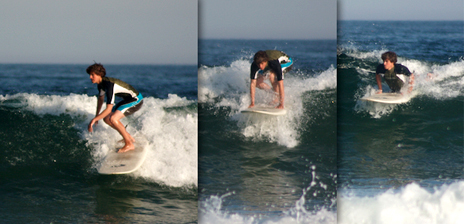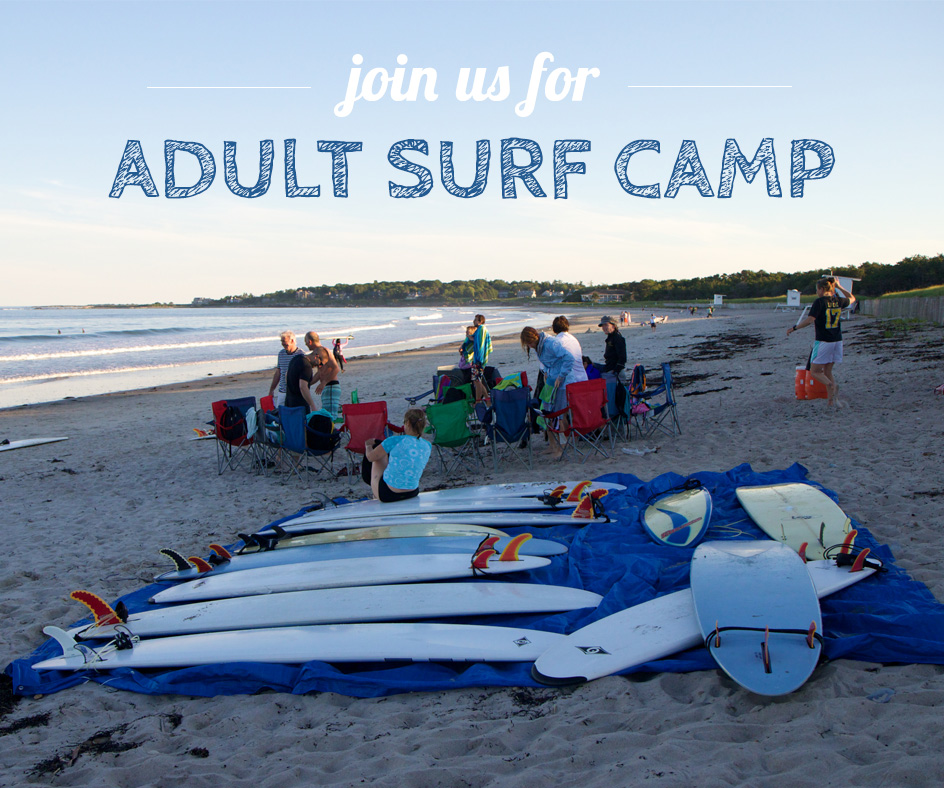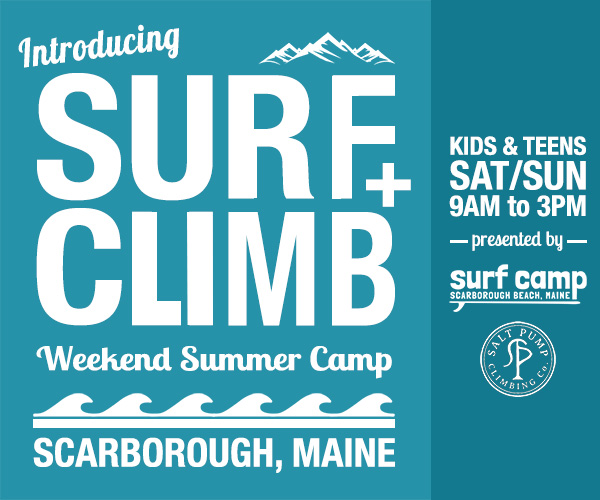Learn To Surf: Top 5 Tips
Keep these tips in mind while you’re learning to surf and you’ll be shredding it up sooner then you ever imagined!
Tip #1: Have the Right Gear
Make sure you have the right surfboard and and a properly fitting wetsuit (or trunks) when you are first learning to surf. Even though the Pro’s on TV and in surf movies almost always ride short boards (generally anywhere from 5’6″ – 7’0″), there is nothing worse than trying to learn to surf on a board that is too small.
For adults learning to surf, a good board size is a minimum of 8’6 and up to 10′. Once you get comfortable riding a longboard, you can gradually move down in size if your goal is to ride a shorter board… but you will only frustrate yourself if you try to learn on one!
It’s also important to where a wetsuit that fits properly (if one is required). A suit that is too big will rub uncomfortably and can cause nasty rashes and even bleeding; not to mention, it will make it much harder for you to paddle and stand up!
A wetsuit should fit tightly and if in doubt, it’s better to have one a little too small than too big (it will keep you warmer too).
Tip #2: Paddling Technique
Paddling is the most important skill in surfing! If you can’t paddle your surfboard well you won’t be able to catch waves, and you’ll get tired quickly. Your “paddling muscles” — think shoulders, arms, and back — take time to get strong just like all the other muscles in your body.
While you are still learning to surf, you should make a habit of doing a paddle warm up every time you get in the water.
Practice by paddling out past the lineup and going around a nearby buoy or just paddling up and down the beach when it’s flat. Good technique while paddling is also important; try to paddle so that your hands reach far out in front of you and stay close to the rails of your board, digging down deep into the water with each stroke. In surfing, it’s not about how fast you paddle but how much energy you get out of each stroke.
Tip #3: Arch Your Back
When surfing, form is key. Both when you are paddling and catching waves, arching your back will make sure that your weight is properly distributed on your board. It will help you avoid tiring but common occurrences when you are trying to learn to surf, such as the “nose dive.”
By keeping your head up you’ll also be able to spot potential waves more easily. The sign of an experienced surfer is that they keep there head up and back arched while paddling — the most common thing you’ll hear a Surf Camp counselor yelling while at surf camp is “arch your back!”
Tip #4: Hand Placement
This tip goes hand-in-hand with Tip #3. While you learn to surf, your impulse will be to grab the rails of your surfboard when you “pop up” to get to your feet… but don’t do it! By grabbing your rails you throw off the balance of your surfboard instead of allowing it to plane evenly over the surface of the water.
When you are about to pop up (and arching your back — see Tip #3!), you should place your hands on top of the deck of the board next to your shoulders.
Remember this tip along with Tip #3 while you’re in the water and you’ll find yourself catching — and making — a lot more waves!
Tip #5: Go Knee-Less
Everyone is guilty of this at first… standing up on your board using your knees (or knee). By using your knees when you pop up you make yourself more off balance and also throw off the balance of your surfboard.
This common mistake also adds a clumsy step right in the middle of the most crucial part of your take off. This step takes practice, but if you keep trying to go straight to your feet without using your knees it will quickly become a habit and take your surfing to the next level.
If you have to use your knee at first (we all did) that’s O.K., but don’t make it a habit! This is actually one of the easiest parts of surfing to practice because you can do it on dry land. Just draw yourself a surfboard in the sand and give it a go!
Use your arms to push your upper-body off the ground (and arch your back), and in one fluid motion try to hop to your feet just like you are on a board — it’s sort of like trying to do the worm!
If you get this down though, it will open up a whole new realm of surfing and you’ll be able to take off on faster and bigger waves.

Here’s a good example of tips 3, 4, and 5 all put together to form a perfect pop-up
Just remember, these things may not (and probably will not) be easy at first, but as long as you practice the right techniques you’ll be on your way to becoming the next Kelly Slater (or at least a better surfer…).
Get in the water with a friend so you can remind each other of these simple surfing tips while you’re learning.
What’s the next step to surfing success? The experienced surfers at Surf Camp who wrote these easy tips have a lot more to teach you when you come to Surf Camp or sign up for a private or group Surf Lesson.
Tags: how to surf, learn to surf, maine surfing, surf tips, top 5 surf tips
Day Camp
Join us for Maine's original surfing day camp. In our flagship summer camp, your camper will learn to surf, make lots of new friends, and hang out at the best place in the world: a Maine beach in the summertime! Book early - camp fills up quickly.
- Full week program (M-F)
- 9AM to 3PM on the beach
- Kids and teens aged 9 to 15
Surf Lessons
Learn to surf with the most experienced instructors in the Northeast. Our surf lessons teach surfing fundamentals that will stick with you for a lifetime. Meanwhile, you'll experience the thrill of wave riding. Fair warning: we've created many addicts!
- Small group lessons
- Kids (9+) and adults of all ages
- Saturday mornings, 9AM - Noon
Give the Gift of Surf
Giving someone the chance to learn to surf is a gift that will pay dividends in health and happiness for a lifetime. We are now selling gift certificates for both all of our surfing programs -- the perfect gift for adventurous souls young and old!




